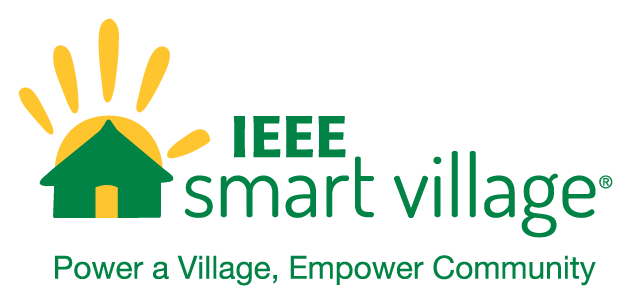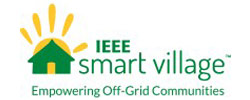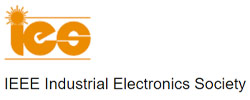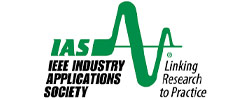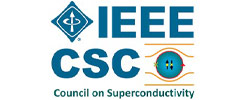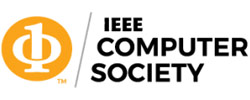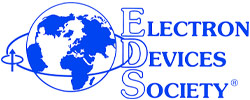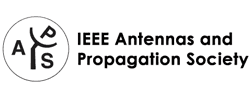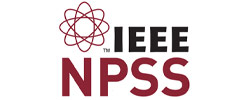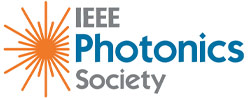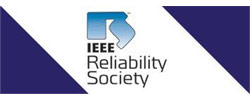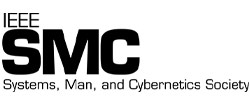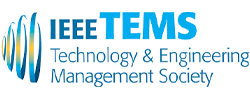EMPOWER: Vol 5. Issue 1 – March 2024
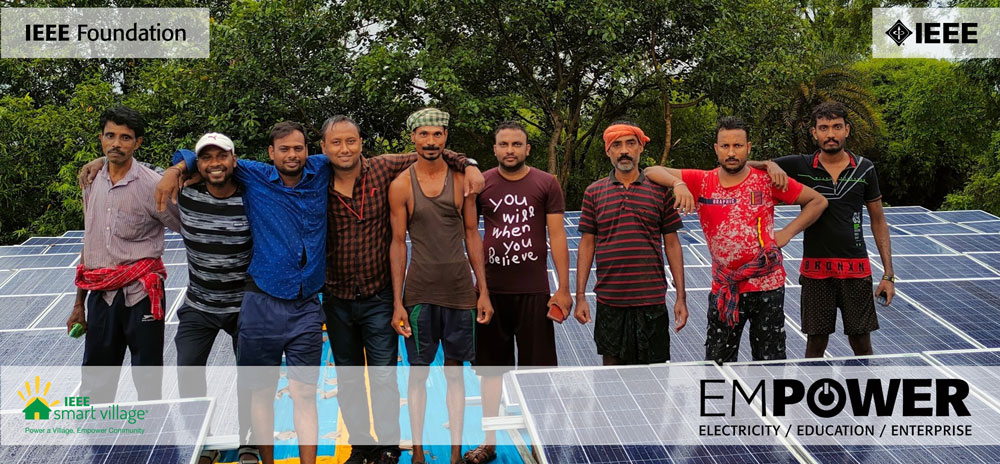
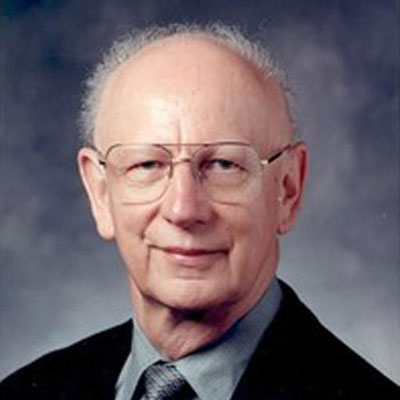
Interview with Ray Larsen, co-founder of IEEE Smart Village
LEKE: Congratulations on the 15th anniversary of IEEE Smart Village (initially Community Solutions Initiative). You and Robin co-founded ISV many years ago. What motivated you to create an initiative with unique pillars, including renewable energy, education, and enterprise?
RAY: The initial opportunity came in June 2009 through an exploratory initiative sponsored by IEEE, United Nations, and Vodafone, the IEEE Humanitarian Technology Challenge (HTC), managed by the IEEE Technical Activities Board from 2008 to 2010. The goal was to explore how IEEE engineers could help eliminate the worst of global poverty by 2030 by developing technology “Solutions” affordable for the very poor (surviving on less than $1-2USD equivalent per family per day) and then finding nonprofit partners (NGOs) to adopt and grow these Solutions to multiple-community scale.
INTERVIEW WITH RAY LARSEN, CO-FOUNDER IEEE SMART VILLAGE – BY OLULEKE (LEKE) BABAYOMI
LEKE: Congratulations on the 15th anniversary of IEEE Smart Village (initially Community Solutions Initiative). You and Robin co-founded ISV many years ago. What motivated you to create an initiative with unique pillars, including renewable energy, education, and enterprise?
RAY: The initial opportunity came in June 2009 through an exploratory initiative sponsored by IEEE, United Nations, and Vodafone, the IEEE Humanitarian Technology Challenge (HTC), managed by the IEEE Technical Activities Board from 2008 to 2010. The goal was to explore how IEEE engineers could help eliminate the worst of global poverty by 2030 by developing technology “Solutions” affordable for the very poor (surviving on less than $1-2USD equivalent per family per day) and then finding nonprofit partners (NGOs) to adopt and grow these Solutions to multiple-community scale.
The IEEE HTC core leadership group had worked with the UN through 2008 to narrow the IEEE volunteer group study to three areas of interest: -. All 39 Societies were invited to send a representative to a July 2009 kickoff meeting in Washington D.C., which brought together IEEE, UN, and non-profits; 10 Societies responded. I was excited to join the effort representing Nuclear and Plasma Sciences Society because I had worked privately with Church-affiliated nonprofits for decades and with a young professor friend already working in the UN program of Sustainable Development with colleagues already engaged with UN counterparts. Another factor was that in 1988, I quit my top-level engineering management job at the Stanford Linear Accelerator Center, now a DOE National Laboratory, to spend seven years in Silicon Valley as President, CEO, and CTO of my own company, taking our patented high-speed sampling integrated circuits to market in a new product line and backed by an industry leader, so I understood how difficult a task we would be asking of our ISV New Initiatives applicants and felt strongly that we needed to pioneer a demonstration proof example of sustainable scalable enterprise to have any credibility.
However, my main personal motivation was long-standing despair over the developed world’s inability to reduce desperate poverty in 20% of the global population, 1.5 billion people, and still growing along with the global population. Renowned Macro Economist Jeffrey Sachs’s The End of Poverty (2005) greatly impacted the poverty eradication UN Millennium Development Goals program of 2000-2015 by offering new hope that for-profit empowerment solutions are possible, necessary, and affordable for the developed nations to lead the way with government-to-government annual donations; thus came the further emergence of the – of 2015-2030 based on indigenous for-profit development and empowerment as the best hope for replacing extreme poverty with lasting prosperity. However, rather than the UN’s top-down government aid, which rarely benefits the extremely poor, we learned of the more critical need for a village-scale bottom-up approach promoting indigenous entrepreneur-led new startups along with broad, sustained Community-Based Education for villages to master the tools to become economically prosperous. Thus, our ISV tagline emerged: “Power a Village, Empower Community.”
LEKE: What were the initial challenges, and how did you overcome them?
RAY: We encountered challenges within the HTC immediately. The Reliable Electricity group formed at the initial meeting had already decided on a single family or business solution, which Robin and I had already been convinced would not be able to scale through a non-technical NGO. Therefore, our initial challenge in June 2009 was requesting permission to form an HTC Subcommittee to develop a Community-Scale Solution for reliable, affordable electricity. The HTC, taken aback, briefly conferred and agreed, but with a warning that it had no prototype funds for us, which we were not requesting because we knew we would need to raise much more funding on our own to demonstrate a Community-Scale Initiative large enough to prove sustainability and scalability which were the key goals of the Humanitarian Technology Challenge.
When we returned home to California from the June meeting, we immediately began recruiting new CSI volunteers to help with the technology and business plans, both scheduled to be reviewed at the next HTC meeting in November. We had also been instructed to secure the NGO partner before that meeting, for which we were gifted one Sunday after church with an outstanding local partner couple already working in Haiti as both an orphanage NGO and a local Jatropha-farming business development.
The HTC-UN-developed program materials included an extreme emphasis on training, on the (correct) assumption that only some engineers and non-profit leadership knew much about entrepreneurism, mainly applied to impoverished villages.
We arrived at the November 2009 meeting with both our NGO partner and our first draft Business Plan in hand. None of the three official initiative leaders had secured a partner or completed a draft Business plan. However, not being on the official program, we were not on the agenda to present but were instructed to help the official Reliable Electricity team complete its field demo program cost and schedule estimates.
CSI rapidly grew to 50 members, including a CEO for office buildings DC solar systems who immediately offered us pro-bono design help, which subsequently designed four generations of the SunBlazer portable solar power units with light kits, later deployed in June 2011 in Haiti. We traveled to New York/Long Island in mid-December 2009 to secure the services of Nextek’s VP of Engineering, which went very well in beginning prototyping early in the New Year.
However, two weeks after that first technology planning meeting in December 2009, on January 12, 2010, a horrific earthquake struck near Port au Prince, Haiti, killing 250,000 people in 15 minutes.
There was an anguished outcry from Haiti expatriate IEEE members that IEEE should help expedite the CSI program, but nobody inside or outside IEEE offered us funding to do so. We would need over a year to respond, and we did not intend to be an emergency response team such as Electricians sans Frontières in France, who, in fact, did respond. Later, one of their members joined CSI and became a major contributor to the SunBlazer and Portable Light Kit hardware and software designs.
We continued working on the designs after the earthquake. At the same time, Sirona, our Haiti NGO partner, refined its excellent business plan based on franchising village-selected franchisees to manage what ended up as systems for 12 villages in two pilot programs, 3 in 2011 and 9 in 2012. However, we still needed more than the keep-alive funding from PES, which needed to be increased to start production.
By April 2010, we began shopping the Sirona business plan to agencies outside of IEEE. After many months, we got a Presidential Foundation offer that would fund our entire 2-year business plan for Haiti, but when it came time to send the first payment, they clammed up and eventually withdrew, advising us to seek venture capital instead!
The IEEE HTC Challenge was scheduled to continue through 2010 but suddenly shut down without warning in March 2010, laying off all staff. This left CSI without an IEEE home, but not for long as Cofounder Robin Podmore of PES immediately secured some PES operations funding and, most importantly, expert oversight by the Executive Director, which allowed us to continue our major goal of clearly demonstrating a sustainable, scalable solution.
Even though HTC closed its doors early, in late November 2009, it came through with a critical $50K donation that rapidly helped leverage the total $250K needed for the pilots of June 2011 and August 2012. Although the HTC program had limited success, it was a brilliant concept, without which CSI-ISV would not exist today.
LEKE: During ISV’s early years, you made news for your intervention in Haiti in 2011, after the 2010 earthquake. What are some memories and lessons from that initiative? How did that initiative influence other successful future seed-funded initiatives?
RAY: The best memories I have were due to the contributions of dozens of volunteers, most notably the team at Nextek in New York, who detailed and built all designs of SunBlazers, Light Kits batteries, controls, everything down to the complete operations manual in three languages of Kreyol (Haitian Creole), French and English that we used for training. On the Haiti side, Michelle and Paul Lacourciere made huge contributions to the development of the on-the-ground entrepreneurs. These franchisees found and serviced the customers for each SunBlazer and were on duty recharging light kits every day. Paul was an engineer and a lawyer who developed the business model, taught the franchisees and secured all legal agreements. I traveled to Haiti three times to help provide the technical training of operators through an interpreter and participated in several SunBlazer deployments from the central meeting place. I was accompanied on the first trip in 2011 by my next-door neighbor John Lorts who proposed we mobilize the unit, and his wife suggested the name SunBlazer. With another neighbor he built a prototype trailer model and then a full-scale model in his garage.
Many franchise operators spoke only Kreyol, so the interpreters were very important. All of this moved amazingly smoothly because of the Lacourcieres’ preparatory work with all community leaders, who in turn appointed Operators who signed up the customers in advance to receive the new fully subscribed light kits.
The impact on all household members, two LED bulbs, and a gleaming SunBlazer as the six solar panels unfolded and began working was dramatic and unforgettable. The first six units from June worked flawlessly, and our expert advisory entrepreneur declared the financial model to be clearly sustainable and scalable.
This was the high point before technical problems began to surface and production was impacted. Commercial manufacturing mistakes were discovered, which we had to address urgently. Issues impacted battery performance, light kit circuit protection, commercial chargers cutting off too soon, and personnel issues with hires. These were all resolved but all at a price of time and impact on businesses. CSI committed to solving all such problems as quickly as possible. On the other hand, the company continued to attract grants totaling well over $1M but never got to the stage of attracting venture capital. They operated successfully from 2011 to 2016 when Hurricane Matthew struck, reportedly destroying all but one damaged SunBlazer. Michelle, then running the business alone and fearing for her safety, abandoned the business. We still hope to restart with a new in-country partner because the rural needs are still as great as ever. Haiti is the poorest and historically most abused nation in the Western Hemisphere. It’s an unfortunate story of colonialism at its worst and foreign NGOs basically taking over the country, which the late great Dr. Paul Farmer labeled “The Republic of NGOs.”
The bottom-line lesson from the sustainable development experts was that having a sound technology plan is 20% of the problem. At the same time, the marketing and business issues for real success, especially in high-poverty areas, are the other 80%. We proved that, as did the other three HTC Solutions that succeeded technically but failed to create sustainable businesses due to a lack of a capable NGO business partner.
Several people gained high recognition for our work in Haiti. Michelle Lacourciere won a San Francisco and a U.S. National Jefferson Award, while the IEEE HTC team won a National Management Association Award. I received the IEEE Richard Emberson Award in 2015 based on my Humanitarian Business Development work, nominated by an NPSS Past President and Past IEEE Region 6 Director.
LEKE: What do you consider ISV’s one or two most significant achievements?
RAY: In 2015, CSI received an invitation to become a Signature Program under the IEEE Foundation, which meant qualifying for financial support and visibility for new donors. The PES and NPSS Societies were the guarantors for ISV in the new arrangement. We were asked for a name change, a program, and a fundraising goal. The chosen name was IEEE Smart Village, and the goal was to launch ten new startups with $200K in seed funds per year for a budget of $2.5M for the next decade. Each new startup pledged to strive to benefit at least a million people, which would be 50 million in a decade. We have yet to meet the funding goal but are holding onto the vision. As the largest professional organization in the world with vast reserves, IEEE can do much more, but we also continue to seek funding from non-IEEE sources. Our leading project in Nigeria will reach a million served very shortly, and two others in Nigeria and Cameroon, all three winning millions in venture capital, are on the same track of installing new microgrids up to 1 MW. As a cofounder, architect, and chair for 11 years, I hold that the vision is our life’s blood, and every new ISV member should be aware when they sign on and ask themselves how they can best apply their talents to help make it happen.
Clearly, the Haiti program was very significant because it met our critical target of making sustainable, scalable for-profit businesses possible even in the poorest areas, upon which all our subsequent work has been based.
In 2012, at our first visit to Africa, we recruited our first three Africa initiatives from Nigeria, Cameroon, and South Sudan. This was just before the installation of Pilot 2 in Haiti. The Nigeria program headed by Ifeanyi Orajaka, at the time a recent engineering graduate, has been the first to win investment support and is now recognized as the leading microgrid company in all West Africa and will be the first to reach the ISV goal of reaching over a million people served, which appears imminent. Two other enterprises are following the same track, Jude Numfor of REI Cameroon and Henry Ureh of Darway Coast in Nigeria have also raised significant venture capital to follow Ifeanyi’s footsteps. All three won $1M consulting awards to evaluate their potential markets needed to attract further capital. These are clearly our flagship initiatives showing the way for others still being recruited. It is a very challenging assignment; only about 10-20% of Silicon Valley startups pass this test.
ISV has been growing and becoming more challenging to manage with many new volunteers in five different Regional Working Groups, all learning how to attract and assist new initiatives that meet the goals of indigenous leadership for-profits, sustainability and potential exponential growth. This strikes at the heart of the problem of global poverty, and we still have a long way to go for IEEE to make its potential significant impact.
Today, several dedicated Task Groups are working to streamline our processes and create more highly visible success stories. It is very demanding work for all of us and our message to all should be, “If your regular job prevents you from contributing enough hours for the hard work of ISV operations, please contribute by raising seed funding for new initiatives in the time that you can afford to help fill a critical need for ISV success.”
LEKE: Compared with ISV’s founding vision, what remains for ISV to achieve? What could still be done better?
RAY: We have done quite well in attracting more new applicants that meet our criteria, but we have many management challenges that Task Groups are addressing. Our fundraising processes are complicated because we must appeal for new funding every year, mostly from a small number of faithful Societies and the IEEE Foundation. By contrast, all other IEEE Humanitarian groups receive a guaranteed annual budget from IEEE Corporate. They can afford paid staff while we currently rely on one overworked half-time staff person and a number of retired full-time volunteers to do the heavy lifting. This business model is very difficult to sustain, and we are striving to grow our budget by a factor of 2 to meet our G&A needs and increase new initiative growth needs.
Our budget needs to double to meet our 2015 goal of funding 10 new startups per year at the maximum seed funding of $200K total each, paid over two to three years.
We are aware and working hard on all these shortcomings with the help of our Governing Board and its members as liaisons to their Societies for reporting and generating new financial support including the modest funds for staff and operations.
LEKE: What advice do you have for the next generation of ISV’s leadership and volunteers?
RAY: First, I want to thank every single volunteer who works hard on a daily or weekly basis to help carry the load needed for us to succeed. You know who you are. We have some amazing people across the board, and we thank you all.
On the other hand, we cannot expect everyone in volunteer leadership to keep up that demanding pace indefinitely, which is why our terms for appointments are two years and renewable for another two if there is a clear need, such as a shortage of management and business experienced replacements.
We often have situations where people in leadership have conflicts and cannot keep up with demand which can lead to huge disruptions especially involving new applications which are time-critical through the onboarding and funding processes. To first order, it is up to our key leaders to find a colleague to cover his/her absence, so everyone does not have to stop and wait for attention. We must train volunteers in leadership to guarantee a quick response at all stages.
I realize that some think I have set a bad example by leading CSI/ISV for 11 years, in the beginning as a Co-Chair with Robin, but later, we were told that was not the IEEE standard, so Robin became a Vice Chair. From my point of view, I had over 30 years of experience managing a high-tech R&D Division and a startup company of up to 40, so none of ISV was burdensome, but it was not a load for anyone new to step into. Founders are a special breed; many will go down with the ship rather than cede power. That is why we have term limits to help keep fresh, high-energy people engaged.
As we grow, we need to streamline continuously, which is always challenging. If you join ISV, be prepared for a roller-coaster ride, hopefully to new heights of global poverty reduction impact for IEEE.
LEKE: Do you have anything more to add?
RAY: Yes, it has been one of the greatest privileges of my life, coming later than I care to admit, to help start-up CSI in 2009 and ISV in 2015, recently voted the top IEEE Foundation Program by IETF donors. We have an amazingly hardworking team with a few important holes needing repair, which is normal and an opportunity for new talent to contribute. I am not one to brag and rest on our past and present accomplishments but concentrate on things that are broken and try to help to fix them.
But with all the impressive things that others are doing, especially the entrepreneurs on the ground, we do appear to have the big picture right!
Profound thanks to all!
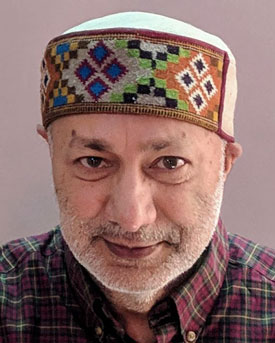
President’s Message – Empowering Communities: IEEE Smart Village’s Journey towards Impactful Enterprise Development
Since its inception fifteen years ago, IEEE Smart Village (ISV) has stood out within IEEE for its unique humanitarian mission: Empowerment through enterprise. Our core objective is to foster the growth of local businesses to enhance livelihoods in underserved communities worldwide. We achieve this by facilitating electrification, promoting the productive use of IEEE technology, and fostering community education. Our vision is to serve as a beacon of hope, promoting the creation of self-sustaining local initiatives with long-term community engagement and impact.
Empowering Communities: IEEE Smart Village’s Journey towards Impactful Enterprise Development
Since its inception fifteen years ago, IEEE Smart Village (ISV) has stood out within IEEE for its unique humanitarian mission: Empowerment through enterprise. Our core objective is to foster the growth of local businesses to enhance livelihoods in underserved communities worldwide. We achieve this by facilitating electrification, promoting the productive use of IEEE technology, and fostering community education. Our vision is to serve as a beacon of hope, fostering the creation of self-sustaining local initiatives with long-term community engagement and impact.
In the first decade of our existence, we funded five to six enterprises annually. However, in the post-COVID era, we have ramped up our efforts, supporting approximately fifteen enterprises annually. This accomplishment is entirely attributed to the dedication of our passionate volunteers and the establishment in 2022 of Regional Working Groups across five key domains: Africa, China, Latin America, North America, and South Asia.
These volunteer-led Working Groups are crucial in guiding and overseeing local enterprises, arranging regional events, and backing initiatives in line with our mission. Additionally, they manage regional conferences, webinars, student groups, and other activities to advance our primary goals by fostering volunteers and applicants who share our vision. These regional and local endeavors are bolstered by the backing of the ISV central leadership committees and administratively supported by committed IEEE staff.
As we move into the new year, we aim to scale up our impact so that ISV can truly make a tangible difference in the lives of nearly a billion underserved individuals. My vision for ISV is to fund up to thirty enterprises annually, comprising twenty-five small entities plus five larger entities grown from small entities from prior years. This ambitious goal requires concerted efforts on two program management fronts.
First, as an IEEE institute-wide program, we are enhancing engagement with the many societies and councils that support the program. In the coming months, expect to see increased visibility of our impact through articles in IEEE publications and an upgraded Smart Village website strongly featuring our global impact.
Second, in 2023, I established several small-team Task Forces to streamline program operations. These Task Forces are focusing on simplifying the program application and onboarding processes, streamlining contract documentation, and implementing efficient back-office software for tracking our global activities, impacts, and outcomes. As we strive to engage IEEE member volunteers’ time, talent, and treasure in support of the program, I see these two actions also benefiting the IEEE Foundation’s campaigns in soliciting external support and funding for the worldwide program.
However, none of this progress would be possible without the invaluable contribution of our dedicated volunteers. I extend my heartfelt gratitude to those already involved for your commitment to this vital work. For those new to ISV, I encourage you to explore how you can contribute to what may become the most fulfilling aspect of your career.
Together, let us advance technology for the betterment of all humanity, empowering communities and fostering sustainable development worldwide.
Global Himalayan Expedition (GHE) Celebrates 10th Anniversary
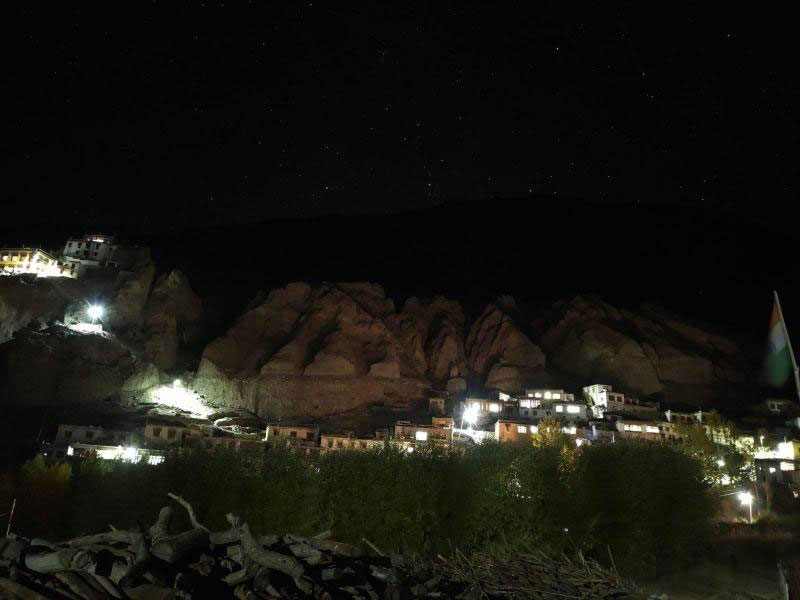
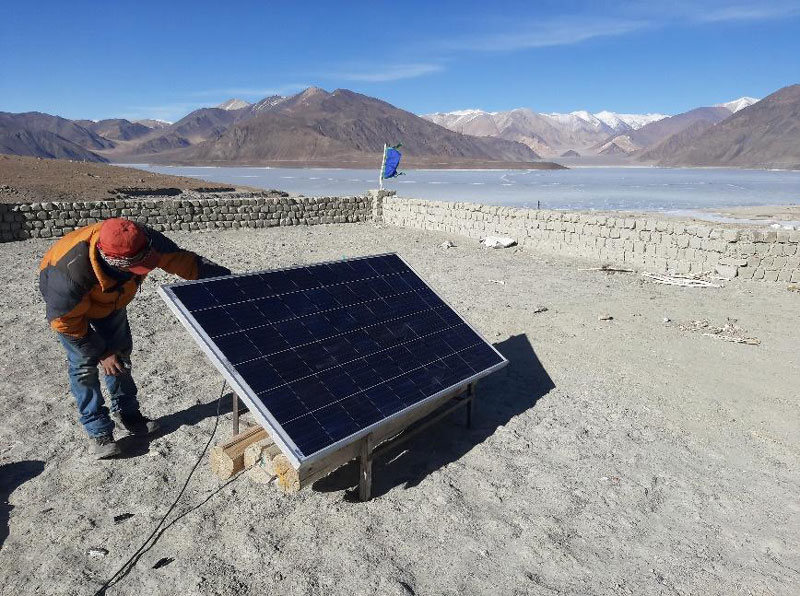
Global Himalayan Expedition (GHE) is a successful enterprise in the Himalayan Mountains. GHE was initially funded by the IEEE Smart Village in 2014. The company uses tourism to provide remote mountain communities with clean energy and livelihood opportunities. GHE’s work encompasses several areas, including clean energy, healthcare, digital education, clean cooking, capacity development, and livelihood opportunities. GHE has impacted over 500,000 lives in 450 households, including 7,000 students. GHE’s work has been recognized by the 2020 United Nations Global Climate Action Award and featured on BBC and National Geographic. Over the next decade, GHE aims to inspire a more connected future, explore new avenues for positive change, cultivate resilience, and foster synergy among sustainable development, clean energy, and community empowerment.
Happy International Women’s Month
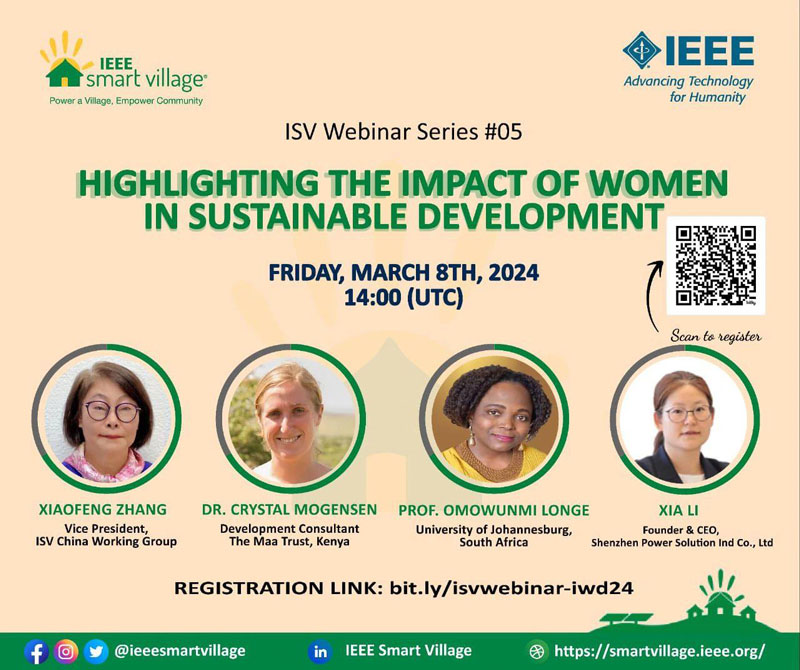
On March 8th, 2024, the ISV’s International Women’s Day Webinar was successfully held, featuring four remarkable women change makers who shared their inspiring stories and impact on sustainable development. Xiaofeng Zhang, the Chair of IEEE Smart Village China Working Group, showcased her exemplary leadership in providing sustainable energy and technology to underserved demographics in China. Crystal Mogensen, the CEO of The Maa Trust in Kenya, took us on a journey through her decade-long work with the Maasai communities, covering education, skills, water, health, and sustainable livelihoods. Omowunmi Longe, a professor at the University of Johannesburg, shared her passionate and selfless work inspiring the next generation of women engineers. Xia (Susan) Li, the 2024 Schwab Foundation for Social Entrepreneurship Awardee, narrated her 20-year journey in providing affordable solar-powered light to almost 50 million people in over 7 million households across 63 countries. The event was moderated by Oluleke Babayomi, Ph.D., R.Eng., the IEEE Smart Village Marketing Committee Chair. It was a truly inspiring event showcasing the impact of women change-makers in sustainable development.
The recorded webinar is available on demand on YouTube
Empowering Rural Communities in China with Clean and Affordable Solar Energy
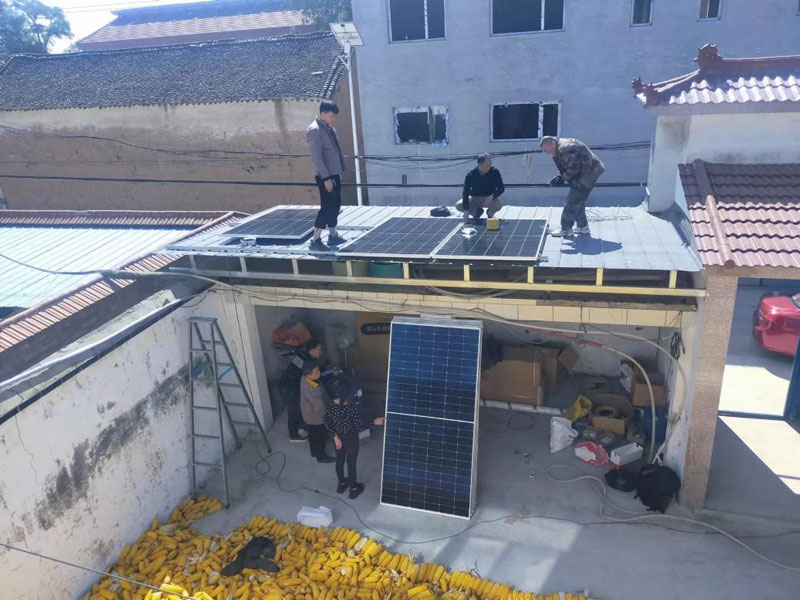
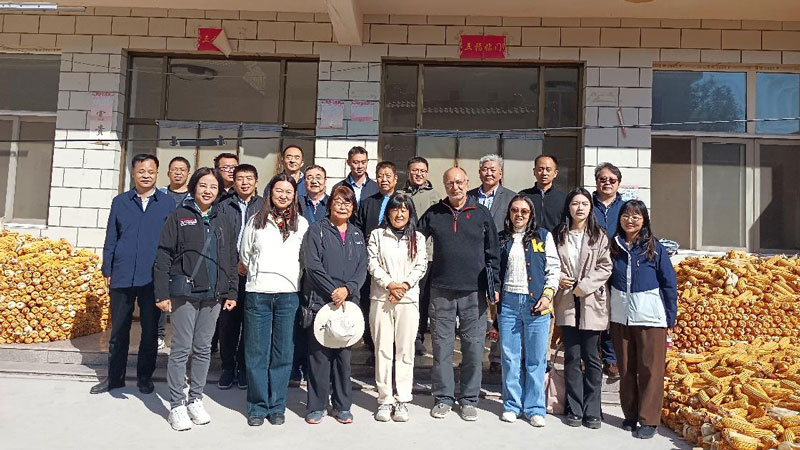
A project aimed at providing low-cost solar electricity and heating for rural households in Changzhi City, Shanxi Province, China, has been implemented by ISV. The project has empowered farmers to assemble, install, and maintain solar power and heating systems for their homes, ensuring access to clean and affordable energy. This initiative reduces the energy burden on rural households and lessens their dependence on fossil fuel-based energy sources, thereby reducing carbon emissions. The project is being guided by Dr. Linghong Li and implemented by Shanxi Dacheng of Low Carbon Energy Technology Co., Ltd.
Ten households were selected based on predetermined installation criteria, and each household nominated an individual capable of independently completing assembly tasks. These individuals formed a technical team within the community and were trained in product production, installation, and operational safety. The community members assembled the solar systems according to their unique home requirements and were responsible for maintenance after commissioning was completed. The project’s long-term success is ensured as the community takes ownership and responsibility for the installations. The pioneer technical team will also recruit and train new members, increasing skills for establishing small businesses and generating income.
Empowering Communities through Entrepreneurship with IEEE Smart Village
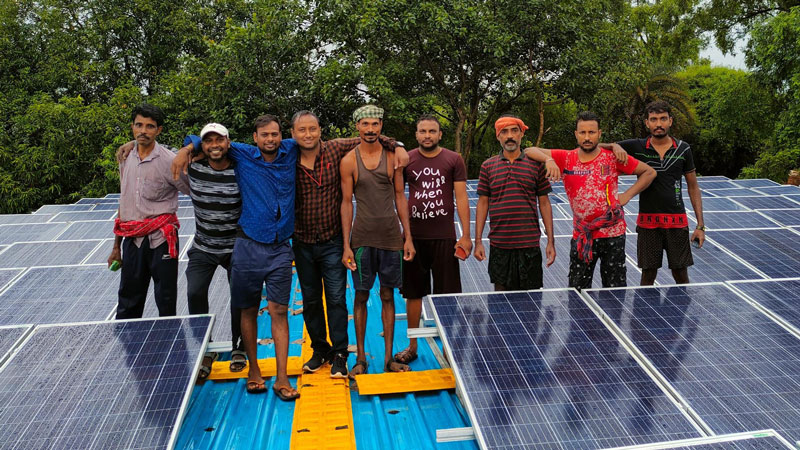
Just fifteen years ago, the notion of an IEEE group working to bring enterprise development to off-grid and remote communities was nascent. Today, IEEE Smart Village (ISV) stands as a beacon of hope across four continents, dedicated to uplifting communities through local entrepreneurship and education. Since its inception, ISV has touched the lives of over two million people, offering mentorship, educational opportunities, and seed funding in regions where such support is scarce. With five regional working groups, ISV incubates local business models based on electrification and the productive use of IEEE technology to establish scalable and autonomous solutions for long-lasting impact.
Empowering Communities through Entrepreneurship with IEEE Smart Village
Just fifteen years ago, the notion of an IEEE group working to bring enterprise development to off-grid and remote communities was nascent. Today, IEEE Smart Village (ISV) stands as a beacon of hope across four continents, dedicated to uplifting communities through local entrepreneurship and education. Since its inception, ISV has touched the lives of over two million people, offering mentorship, educational opportunities, and seed funding in regions where such support is scarce. With five regional working groups, ISV incubates local business models based on electrification and the productive use of IEEE technology to establish scalable and autonomous solutions for long-lasting impact.
Guidance is offered through regional volunteers, back-office support, and financial assistance to validate business models in these communities. The comprehensive selection process prioritizes proposals demonstrating a clear vision for scalability and self-sustainability that can attract additional resources for future expansion. You are invited to explore recent initiatives that exemplify ISV’s mission.
Solar off-grid Island: Smart Irrigation, India
At the forefront of all ISV initiatives lies self-sustainability. More than a decade ago, SunMoksha Power Private Limited, a turnkey microgrid solution provider and an engineering college in southeast India, pioneered microgrids, smart irrigation, and innovative technologies. Today, with the support of ISV, they are transforming Kudagaon, a river island in the state of Odisha, India, with SmartAQUAnet™, a multi-stage solar-pumped irrigation system, which the farmers will be taught to own, operate and maintain. This innovative project, supported by the IEEE Power & Energy Society, aims to revolutionize agricultural practices, doubling farmer’s incomes within a year.
This enterprise example highlights two aspects of ISV’s approach to engaging with entities for a long-lasting impact. First, ISV requires applicants to demonstrate community engagement: they must clearly understand the local needs and community buy-in for the proposed technology and business solutions. Second, ISV’s program support fosters invaluable peer-to-peer learning opportunities among and between ISV-funded entities. SunMoksha’s community engagement model is now being shared with other ISV developers, and irrigation technology is being made available for different initiatives in India and around the globe.
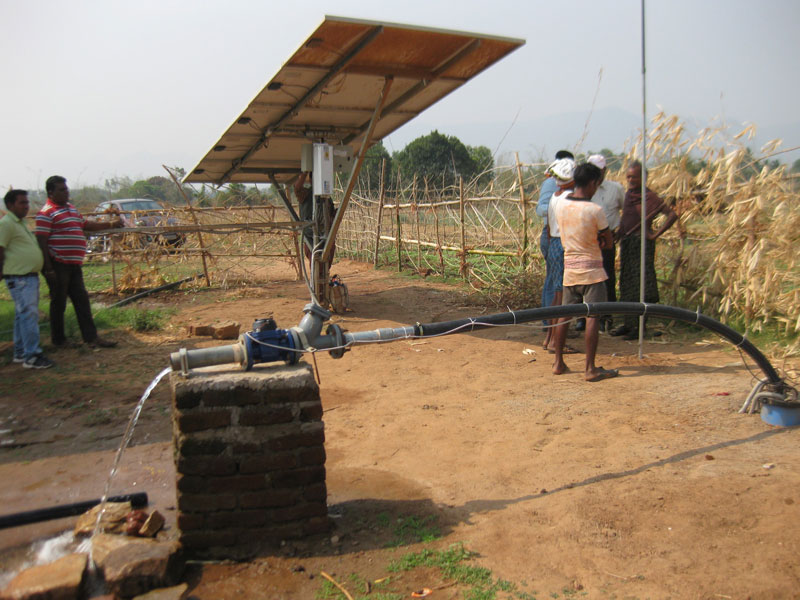
Fleet of standalone Solar: Mini-grids in Nigeria.
Established in 2015 and commencing electricity provision in 2017, Darway Coast Nigeria, Ltd. currently operates 14 standalone solar mini-grids. They cater to more than 10,000 customers and benefit a population of 50,000 in Rivers State, Nigeria. Their commitment to sustainable energy drives their mission forward.
Throughout Darway’s history, ISV has supported its goal of replacing kerosene, candles, and petrol or diesel-generated electricity with non-polluting electricity for domestic and productive use. Using this approach, Darway has successfully powered several communities and 15 health centers with access to reliable and clean energy. As a result, more women have access to better healthcare and are directly or indirectly employed; children have better care, students have reliable energy for studying, and more than 30 new businesses have sprung up.
Thanks to ISV’s support, Darway has demonstrated its credibility as an enterprise worthy of securing funds from other sources. This will enable them to energize over 150,000 customers and empower over one million people in the next four to five years. Their partnership with ISV, made possible by donors and the IEEE Nuclear Plasma and Sciences, Industrial Applications, and Power and Energy Societies, is moving them forward to achieve this goal.
Alaska Unlimited: A Unique Collaboration
Aniak is a native Alaskan village in the sparsely populated backcountry of Alaska, one of the poorest regions in the United States. Electricity for 400 homes and businesses is generated locally using 1.2 million gallons of diesel annually. The village is 300 miles west of Anchorage, with complex supply logistics and highly unreliable grid connection. Couple that with the fact that there is minimal sunshine for six winter months. Sadly, this description is not unique to Aniak; it is typical of many Alaskan native habitations in this vast state.
Members of the ISV North America Working Group (NAWG) joined with Alaska Unlimited (“AU”) in 2023 to seek cleaner, local alternatives for electricity generation. AU is an Alaskan woman-led 501(c)(3) nonprofit with the purpose of promoting direct beneficial economic diversification, stability, and growth that works with all levels of government and society to improve the socioeconomic conditions of rural Alaska. NAWG engages with local organizations such as AU to develop locally viable solutions. Their joint analysis of the technical, jurisdictional, cultural, and financial dimensions of implementing a solar photovoltaic system to supply electricity during the six summer months contributed to the local Alaska tribal corporation’s taking the development forward.
This partnership represents an exciting evolution for ISVs. It offers a new ISV model that focuses on providing technical expertise and mentorship rather than financial support. Next up with AU, a study of micro-nuclear deployment is planned, pending the availability of financial support.
Join the movement:
IEEE Smart Village invites you to join this informative journey. Together, we can nurture local enterprises, harness technology, and ignite change in underserved communities worldwide. To learn more about ISV’s impactful initiatives and how you can contribute, visit https://smartvillage.ieee.org. Are you interested in supporting IEEE Smart Village’s mission? Contact Michael Deering, Sr. Development Officer, at m.deering@ieee.org or +1 732 562 3915. Your support will make a difference.
IEEE Foundation originally published this article.
Your support is what makes Smart Village possible.
To make a donation to IEEE Smart Village, visit ISV Donate Now.
To hold a confidential conversation regarding your donation, contact Michael Deering at m.deering@ieee.org or call +1-732-562-3915.
To learn more visit: IEEE Smart Village-Empowerment Through Enterprise.
Important links you don’t want to miss!
Not an IEEE Member? Here’s how to join IEEE https://www.ieee.org/membership/join/index.html
Click here to learn more about IEEE membership and special discounts for developing nations and low-income economies at https://www.ieee.org/membership/join/emember-countries.html
For more information about discounts for societies, check out the following link: https://www.ieee.org/communities/societies/index.html
